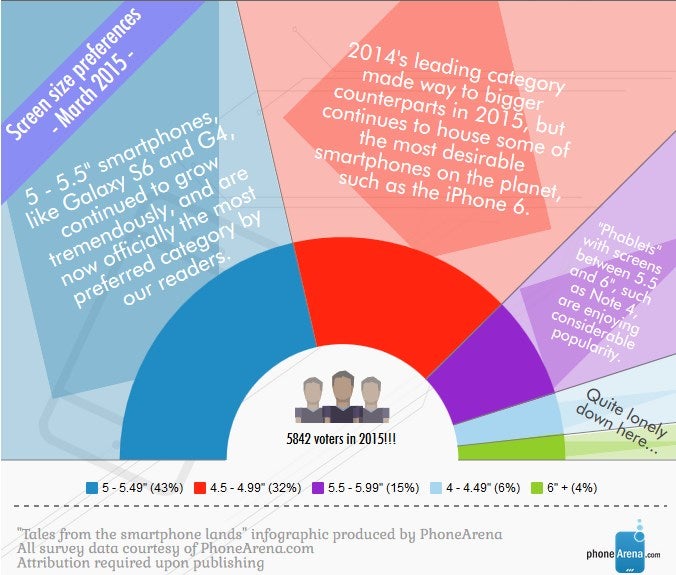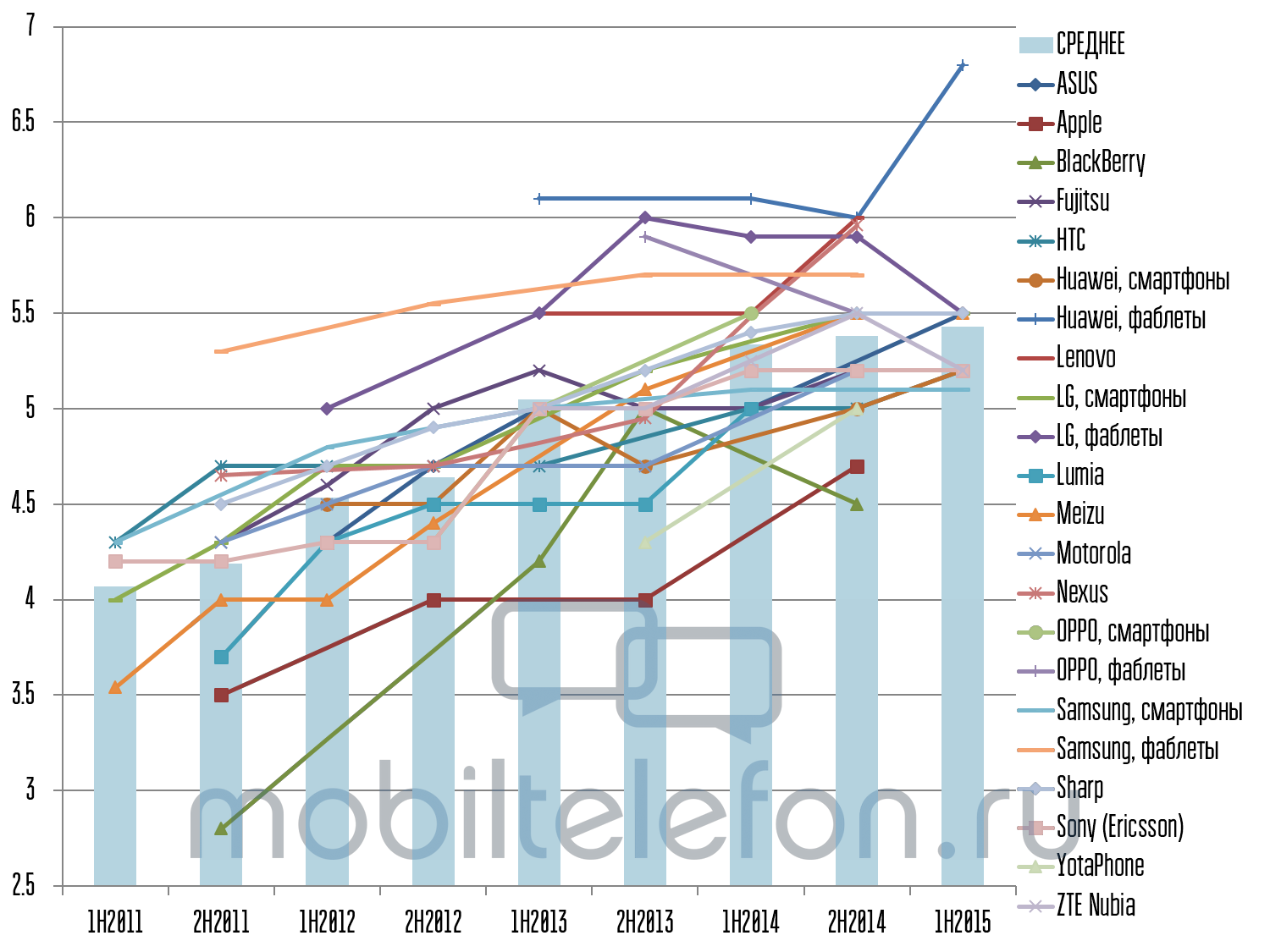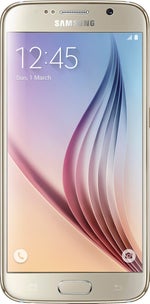Arrested development: have phone screens stopped growing?
It used to be the law of the land - every year since the original iPhone's inception, smartphone displays grew bigger and bigger. Even Apple's ultraorthodox way with screen diagonals saw the iPhone grow from a paltry 3.5" display to the 4.7-incher we have now, and even the 5.5" 6 Plus phablet. The ever-expanding phone display trend undoubtedly had its origins in emerging markets, where the phone is often the primary window to the digital world.
Users in Asia, for instance, are often hooked on massive online games and media consumption that requires bigger and bigger displays, and, given that there's a ton of smartphone manufacturers from that part of the globe, they happily delivered. The research firm Jana asked users in nine such markets last year about their screen size preferences, and the results were overwhelmingly tilted towards the 5"+ category.

We recently made an infographic which visualizes the sea change in screen size preferences of our readers over the last few years, based on our own poll results. In 2011, when we first polled you on the topic, our most daring readers were pushing the envelope at the giant for its time 4.3" panel of the Galaxy S II, for instance. By 2014, those preferences grew towards the 5" stretch, while back in the spring of this year you stated that screens 5"-5.5" are the perfect tradeoff between portability and viewing experience, while the 4-4.5" category that was all the rage in 2011, got only 6% of the votes in 2015. Here's where we stand now in terms of screen size preferences:

Arrested Development
We've grown accustomed to the ever-growing screens of our smartphones, but here's the most interesting part - phone screens just stopped growing this year. Yep, it is not only HTC, Samsung, Sony or LG from the brand-name boys that released flagships with the same screen sizes as last year for the first time, but also the Chinese warriors stopped pursuing larger screen size relentlessly, seemingly stopping at about the 5.5" mark.
Looking at the chart below that maps the change in flagship screen sizes each consecutive year, starting with 2011, we can see that (with the exception of Apple, which is catching up with a big leap and, to some extent, Asus) the relentless diagonal growth has reached a plateau. When we think about it, the Galaxy S5 and S6 both have 5.1" displays, the One M8 and One M9 go with 5-inchers, LG G3 and G4 with 5.5" screens, and Xperia Z2 and Z3/Z4 all come with 5.2" screens. Even the ever-expanding Huawei went from 5" on the P7 to only 5.2" on the P8. Hardly a coincidence, but an emerging trend, it seems.

Conclusion
Have phone screens finally stopped growing? It certainly looks like screen size stretching has reached a plateau this year for the first time, with all major manufacturers leaving their flagship phone sizes where they are, while competing on screen resolution and other specs instead. There is a physical limit to what your palm, pocket, or purse can bear, and it seems that with the proliferation of 5.5-inchers in both the midrange and flagship categories, we have hit that mark, for better or worse.
What do you think, are you happy that phone displays aren't growing anymore, or do you think we can squeeze a bit more by working on the screen-to-body ratios, and only then call it a day?
reference: Jana (1), Mobiltelefon.ru (2)
Follow us on Google News




















Things that are NOT allowed:
To help keep our community safe and free from spam, we apply temporary limits to newly created accounts: